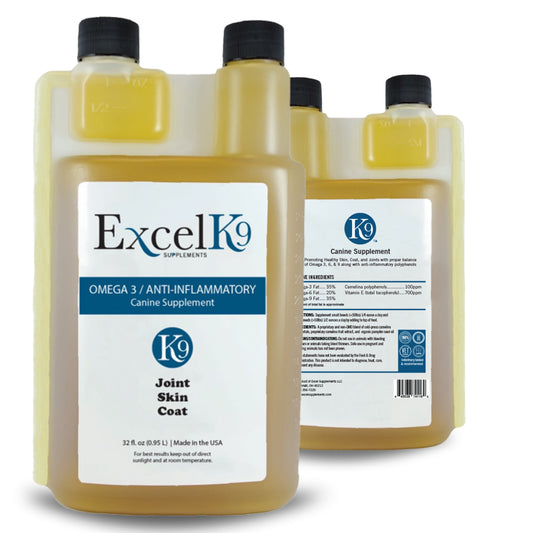Omega-3 Fatty Acids for Dogs: ALA vs. DHA vs. EPA: Part 2
Share
When it comes to omega-3 fatty acids, understanding the differences between ALA, DHA, and EPA is essential for optimizing your dog's health. Let’s dive into what each of these fatty acids entails and their unique benefits.
What Are Omega-3 Fatty Acids?
Omega-3 fatty acids are crucial for maintaining a dog's health. They come in three primary forms: Alpha-Linolenic Acid (ALA), Docosahexaenoic Acid (DHA), and Eicosapentaenoic Acid (EPA). Each type of omega-3 fatty acid plays a distinct role in your dog's well-being.
Alpha-Linolenic Acid (ALA)
ALA is an essential short-chain fatty acid, also known as alpha-linolenic acid. Unlike DHA and EPA, ALA is found primarily in plant-based sources. This fatty acid is vital because dogs cannot produce it on their own. ALA supports healthy heart function and acts as a precursor for DHA and EPA production.
Docosahexaenoic Acid (DHA)
DHA, or docosahexaenoic acid, is a long-chain omega-3 fatty acid found mainly in seafood. It plays a critical role in brain health, eye function, and the central nervous system. DHA is particularly important for puppies and dogs with visual or cognitive issues.
Eicosapentaenoic Acid (EPA)
EPA, short for eicosapentaenoic acid, is another long-chain fatty acid present in seafood and grass-fed meats. It is essential for supporting the immune system and reducing inflammation. EPA is beneficial for dogs with arthritis or other inflammatory conditions.
How Does ALA Convert to DHA and EPA?
The body can convert ALA into DHA and EPA, but the efficiency of this process varies. Grass-fed meats and fish consume ALA from plants and convert it into DHA and EPA, which is why including these sources in your dog’s diet can be beneficial.
However, it is crucial for dogs to receive ALA directly because it is an essential fatty acid that their bodies cannot produce. ALA acts as the precursor to DHA and EPA, making it a fundamental part of their omega-3 intake.
Which Omega-3 Fatty Acid is Best for Your Dog?
No single omega-3 fatty acid is superior to the others; each serves a unique purpose. Here’s a breakdown of their specific benefits:
- ALA: Ideal for supporting heart health. Dogs at risk of heart disease can particularly benefit from ALA.
- DHA: Essential for brain and eye health, and important for the development of puppies. It is especially useful for dogs with visual or cognitive issues.
- EPA: Supports immune function and reduces inflammation. It is beneficial for dogs with arthritis or other inflammatory conditions.
Conclusion
Incorporating ALA, DHA, and EPA into your dog’s diet ensures comprehensive health benefits. Rather than focusing on which omega-3 fatty acid is best, prioritize a balanced intake of all three to support your dog's overall health.
For more information on omega-3 fatty acids and their benefits, check out these resources:




